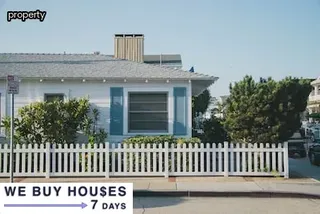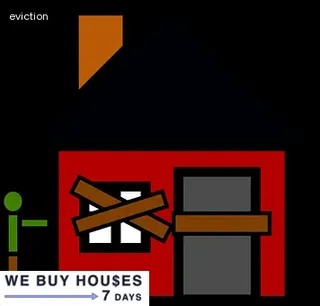In Oregon, landlords must understand the laws surrounding property damage caused by tenants in order to protect their investments. Landlords are responsible for providing safe and secure housing and should inspect the premises prior to move-in and after move-out of tenants.
It is important for landlords to take note of any existing damage and document it before a tenant moves in, as this will help them distinguish between damages caused by tenants and normal wear and tear. Landlords should also be aware of what constitutes normal wear and tear in Oregon and when they can charge a tenant for repairs or replacements due to damage they caused.
Furthermore, Oregon landlords must follow certain procedures if they need to collect damages from their tenants; this includes written notices informing tenants of their rights, filing claims with the court if necessary, and using a third party rental dispute resolution service if available. Understanding these laws is essential for landlords in order to protect themselves against potential legal disputes over property damage in Oregon.

As an Oregon landlord, it is important to understand the concept of normal wear and tear versus tenant damage. Normal wear and tear is expected in rental properties over time and landlords typically cannot charge tenants for this type of deterioration.
However, tenant damage that exceeds normal wear and tear should be charged to the tenant in order to restore the property back to its original condition. This can include anything from cigarette burns or holes in walls caused by hanging pictures, to peeling paint or stained carpets caused by negligence or abuse.
It is important for landlords to document any pre-existing damage before a tenant moves in so they are not held liable for any additional charges that occur during the course of tenancy. Additionally, it is wise for Oregon landlords to create written policies outlining what is considered normal wear and tear versus tenant damage so both parties have a clear understanding of their rights and responsibilities when it comes to managing rental properties.
When it comes to Oregon landlords, navigating tenant damage and wear & tear rights can be tricky. It’s important for both tenants and landlords to understand the difference between normal wear and tear and rental damage so that they can ensure a successful rental relationship.
Normal wear and tear are changes that occur over time due to everyday use of the premises. These include small holes in the wall caused by picture frames, faded paint, worn carpeting, and worn countertops.
On the other hand, rental damages are those caused by misuse or negligence of tenants or their guests, such as broken windows, large holes in walls or ceilings, pet damage, spilled bleach on carpets or floors, etc. Tenants are responsible for any damages they cause beyond normal wear & tear and should make sure to communicate with their landlord if any issues arise during their tenancy.
Landlords should also be aware of their rights when it comes to collecting payment for repairs or damages from tenants when necessary.

Oregon landlords need to be aware that documenting inspections and repairs for tax purposes is an important part of the tenant damage and wear & tear rights process. Keeping records of all relevant documents, such as rental agreements, photos, repair invoices, and inspection reports, is essential for any landlord who wants to deduct expenses from their taxes.
It’s important to document not just major repairs but also routine maintenance and small fixes that may come up over the course of a lease. Taking photographs before and after repairs and keeping detailed notes about the condition of the property when tenants move in or out can help landlords stay organized and prepared if they are ever questioned by the IRS.
Not only will this ensure compliance with tax law, but it can also help Oregon landlords protect themselves from unexpected liability for property damage caused by tenants.
When it comes to disputes over property damage in Portland, Oregon landlords must be aware of their rights and the laws governing tenant-landlord relationships. Fortunately, there are ways to effectively resolve disputes without resorting to lengthy legal battles.
Landlords should first examine the specific lease agreement and any applicable state laws to determine what kind of damage is considered normal wear and tear versus tenant damage. In most cases, tenants are responsible for repairs resulting from intentional or careless damage.
It is also important for landlords to document all damages before a tenant moves out and to make sure that these records are accurate and up-to-date. Additionally, landlords can take advantage of mediation services offered by local housing authorities or other organizations if there is disagreement about who should pay for repairs or replacement costs.
Finally, if necessary, landlords can pursue damages through the civil court system with the help of an experienced attorney who understands Oregon landlord-tenant law.

Landlord-tenant law in Oregon and Washington provides guidance for landlords navigating the rights of tenants related to damage and wear & tear. In both states, landlord-tenant laws detail the responsibilities of landlords and tenants when it comes to damage or normal wear & tear that occurs in rental properties.
Oregon landlords must be aware of the state's Security Deposit Law, which limits the amount a landlord can charge as a security deposit to one month's rent. Landlords are also responsible for informing tenants about their rights regarding damage or normal wear & tear before entering into a tenancy agreement.
In Oregon, landlords have the right to deduct from a tenant’s security deposit any fees associated with damages beyond normal wear & tear caused by the tenant during tenancy. In Washington, however, landlords are not permitted to use security deposits for damages beyond normal wear & tear.
The state requires landlords to obtain estimates of repair costs from licensed contractors and provide copies to tenants before deducting these amounts from their security deposits. Both states require that landlords return a tenant’s security deposit within 31 days after lease termination.
Understanding landlord-tenant laws in Oregon and Washington is essential for landlords navigating tenant damage and wear & tear rights.
Tax season can be a stressful time for landlords and tenants alike. Preparing in advance is the best way to ensure you're ready to tackle any financial obligations that may arise.
For Oregon landlords, understanding the laws surrounding tenant damage and wear & tear rights are essential to navigating tax season with ease. Landlords should familiarize themselves with Oregon rental laws regarding tenant damages, as they can inform how much of a tax deduction they are eligible for.
Tenants should also be aware of these laws, so that they understand their responsibility when it comes to maintaining a safe and secure rental property. Furthermore, both parties should make sure all necessary paperwork is filed correctly and on time in order to maximize deductions without running into any legal hurdles.
By being prepared for tax season with the proper knowledge of Oregon landlord-tenant laws, both landlords and tenants can rest assured knowing that their finances are taken care of when April rolls around.

As a landlord in Oregon, it is important to be aware of your rights when it comes to tenant damage and wear & tear. Taking proactive measures to minimize unnecessary damage can help you protect your rental property and ensure that your tenants are responsible for any damage they cause.
A good start is to have an inspection before the tenant moves in and provide a copy of this inspection to the tenant so that any damages can be identified and documented quickly. Additionally, make sure that you have a written agreement with your tenant outlining the responsibilities associated with maintaining the rental property.
This includes providing regular maintenance such as cleaning carpets, painting walls, and regularly changing air filters. Lastly, communicate openly with tenants about any concerns or questions they might have regarding the condition of the rental property and encourage them to report any issues as soon as possible so that you can address them promptly.
By taking these steps, landlords in Oregon can reduce unnecessary wear & tear on their rental properties while also protecting their rights as owners.
As an Oregon landlord, you have the right to protect your valuable asset from tenant caused damage. It is important to understand your rights when recovering financial loss due to tenant damage and wear and tear.
Your rental agreement should clearly outline what is considered normal wear and tear versus tenant caused damage, as well as the tenant's responsibility for damages beyond normal wear and tear. Oregon tenants are required by law to follow specific guidelines regarding security deposits, including how much can be charged, when it can be used, and when it must be returned.
Landlords have the right to withhold part or all of a security deposit if tenants do not comply with the terms of their lease agreement or cause significant property damage beyond normal wear and tear. If a landlord does decide to deduct money from a tenant’s security deposit for damage or unpaid rent, they must provide an itemized list of expenses along with any remaining balance within 31 days after the tenancy has ended.
In addition, landlords should familiarize themselves with state laws regarding eviction notices in order to ensure they are following proper procedures in case of nonpayment or unauthorized property damage. It is important that Oregon landlords understand their rights when it comes to recovering financial losses related to tenant caused damages in order to protect their valuable asset.

Common property damage issues that can arise during tenancy are a major concern for Oregon landlords. From pets to plumbing, many things can go wrong in a rental property and it is essential for landlords to be aware of their tenant's rights and responsibilities when it comes to damage and wear & tear.
Tenants must take reasonable care of the rental unit and report any potential damages or maintenance needs as soon as possible, otherwise the landlord could be held responsible for the cost of repairs. Additionally, tenants may not cause intentional or negligent damage, or use the property for illegal activities.
Landlords should also be aware of what constitutes normal wear & tear versus damage from neglect and improper use. Finally, knowing how to handle security deposits, document damages properly, and seek legal help if needed is important in protecting both tenant and landlord rights.
When it comes to rental properties, paint and carpet upkeep are essential for creating an inviting atmosphere for tenants. As an Oregon landlord, you must understand the rules related to tenant damage and wear & tear rights in order to properly manage paint and carpet depreciation.
Tenant damage is defined as damages that are a result of the tenant’s negligence or intentional behavior, while wear & tear is simply the natural degradation of the property due to normal use. It is important to distinguish between these two categories when assessing any repairs or replacements that may be necessary.
In Oregon, landlords must provide tenants with written notice before any repairs or improvements can be made. This includes painting walls and replacing carpets due to normal wear & tear.
Furthermore, if a landlord chooses to repaint walls or replace carpets because of tenant damage, they are usually not required to reimburse the tenant for these expenses unless stated otherwise in the lease agreement. To ensure your rental property looks its best and attracts high-quality tenants, it is important for landlords in Oregon to understand their rights when it comes to managing paint and carpet depreciation caused by both tenant damage and normal wear & tear.

As an Oregon landlord, it's important to be aware of the rules and regulations surrounding tenant damage and wear and tear rights. Vandalism or unauthorized alterations to the property can cause a significant amount of strife between the landlord and tenant.
As such, it is essential that landlords are familiar with their legal rights in these situations. In Oregon, landlords have the right to ask tenants to compensate them for any damages which occur as a result of malicious actions or negligence.
Tenants must also agree not to make any changes to the property without first obtaining consent from the landlord. It is important that landlords clearly communicate their expectations regarding these matters so that both parties understand their respective responsibilities.
Furthermore, Oregon law requires that landlords give tenants ample notice if they intend on entering the premises for inspection purposes or for making repairs. Lastly, landlords should keep records of all communication with their tenants in case any misunderstandings arise down the road.
Oregon landlords must be aware of their rights and responsibilities when it comes to damages caused by tenants. In some cases, the tenant will be responsible for repairs due to personal negligence or damage that was caused intentionally.
In other cases, the landlord may be liable for damages resulting from ordinary wear and tear. To determine who is responsible for a particular instance of damage, Oregon law requires landlords to consider factors such as the age of the unit, prior conditions of the property, and whether the tenant had taken reasonable steps to maintain the rental property.
In some cases, if a landlord fails to make necessary repairs in a timely manner, they may be held liable for resulting damages. Additionally, if a landlord fails to conduct regular inspections of their rental properties, they may be found responsible for damage that could have been prevented with proper maintenance.
Ultimately, Oregon landlords need to understand their legal obligation when it comes to tenant-caused damages in order to protect themselves from potential liability.

In Oregon, landlords and tenants have access to a variety of legal resources for resolving disputes related to property damage and wear & tear. For starters, Oregon’s Landlord-Tenant law outlines the rights and responsibilities of both parties in these types of situations.
Tenants are responsible for returning the rental unit in its original condition, with the exception of normal wear & tear. Landlords must also follow certain steps when it comes to collecting damages from tenants.
In addition, Oregon’s Small Claims Court offers an informal way for landlords and tenants to resolve disputes without having to go through a lengthy court process. The court allows small claims cases to be heard up to $10,000, however some counties may have higher limits.
Lastly, landlords can seek professional legal advice from a qualified attorney if they need help navigating tenant damage and wear & tear rights.
As an Oregon landlord, it is important to understand your rights and obligations when it comes to tenant damage and wear and tear. Knowing when to replace carpet in rental units is a key part of cost saving maintenance practices.
While it may be tempting to wait until the carpet is extremely worn before replacing it, this can end up costing more in the long run. If a tenant has caused damage due to negligence or misuse, then the landlord may be able to charge for repairs or replacement costs.
However, when wear and tear from normal use is at issue, a landlord must make sure they are not overcharging their tenant. Carpet that shows signs of age should be closely examined for any stains or other issues that could easily be resolved with proper cleaning.
In some cases, deep cleaning can help restore the look and feel of older carpets without having to replace them entirely. It is also wise for landlords to invest in quality carpeting so that it will last longer even with regular use.
By using these tips, Oregon landlords can save money on costly replacements while still keeping their rental properties looking good.

Regular inspections provide an opportunity for landlords in Oregon to take proactive steps to reduce tenant damage and wear & tear. These inspections enable landlords to detect potential problems early, before they become costly repairs or deductions from a tenant's security deposit.
Inspections also give landlords insight into how their tenants are caring for their property, which can help identify any issues that may be caused by negligence or misuse of the rental space. As part of the inspection process, landlords can inspect all areas of the rental unit for signs of excessive wear and tear or damage that may have been caused by unauthorized alterations.
Doing so helps ensure that any charges to the tenant will be fair and within the scope of allowed deductions, as outlined in Oregon's laws regarding security deposits. Additionally, regular inspections allow landlords to document the condition of their property before and after a tenancy agreement has begun, providing legal protection in case any disputes arise over damage or wear & tear.
When a tenant causes damage to a property, it is important for Oregon landlords to understand their rights and the procedures for handling tenant refusal to pay for the damage. Landlords must first review their rental agreement, since it should provide guidance on how to handle the situation and any applicable statutes.
They should also determine if the tenant's refusal is based upon legitimate grounds, such as not being responsible for the damage or having already paid for repairs. If this is not the case, landlords should consider filing a claim in small claims court in order to receive compensation.
It may be necessary to serve the tenant with notice of eviction if they continue to refuse payment. Additionally, landlords should ensure that any security deposits are applied towards damages from tenants who do not pay.
Lastly, maintaining accurate records of all communication and transactions can help protect landlords when dealing with tenants who are refusing to pay for damages caused by their negligence or intentional acts.

When it comes to rental properties in Oregon, landlords must be aware of the rights and responsibilities they have when it comes to damage and wear & tear caused by tenants. It is important for both parties to understand the landlord-tenant laws concerning these issues, especially when payment disputes arise over excessive wear & tear on rental properties.
Landlords must be able to spot undue damage and determine if the tenant is responsible for its cost; this includes any damages that may occur during the tenancy as well as beyond normal wear and tear. The tenant’s responsibility may depend on whether or not proper maintenance was done over time, so it is important for landlords to keep records of all repairs done by the tenant or landlord.
If a dispute does arise between a landlord and tenant, knowing the rules and regulations of Oregon state law will help ensure that the situation is resolved quickly and fairly.
As an Oregon landlord, it's important to understand your tenant damage and wear and tear rights in order to maximize your investment in rental property. This includes ensuring that all tenants sign a detailed agreement outlining their responsibilities, as well as clearly outlining the circumstances under which you may withhold security deposits or seek legal remedies.
Knowing what you are legally entitled to can help protect you from costly litigation, while also providing clear expectations for both landlords and tenants. It is critical to include provisions such as late fees, pet policies, rent increase terms, and rules about subletting.
Additionally, make sure that the agreement outlines damage repair procedures along with any applicable deductibles or reimbursements for damages caused by tenants. To ensure everyone abides by the agreement, always take pictures of the property prior to occupancy and review them with the tenant at move-in time.
Doing so serves as a visual reminder of pre-existing conditions versus damages caused by tenants down the road. By taking these steps when establishing an effective tenant agreement in Oregon, landlords can better safeguard their property investments over time.

Oregon landlords can reduce the risk of loss from unforeseen rental property damage by thoroughly screening tenants prior to move-in, instituting a tenant security deposit, and requiring tenants to sign a lease agreement that outlines their responsibility for damages. Landlords should also conduct regular inspections of their rental properties during tenancy and document any signs of wear or damage.
In the event of tenant-caused damage, Oregon landlords are entitled to collect reasonable costs for repairs or replacements; however, it is important to note that landlords cannot charge tenants for normal wear and tear. By understanding the difference between these two types of damage, Oregon landlords can ensure they are taking appropriate action and exercising their rights in a legal manner.
Additionally, having an emergency fund set aside and carrying landlord insurance are great ways for Oregon landlords to protect themselves from potential financial losses due to unexpected rental property damages.
In Oregon, landlords are allowed to charge tenants for damages they cause beyond normal wear and tear. The amount charged must be reasonable and commensurate with the amount of damage caused.
In other words, a landlord cannot charge an exorbitant fee for minor damage. Additionally, any fees charged must correspond to the tenant’s lease agreement, which should clearly spell out what can be charged for damages and the maximum amount that can be charged.
Landlords must also provide receipts for any damages they do charge. Furthermore, if a tenant disagrees with the charges assessed by their landlord, they may file a complaint to have these charges reviewed by an arbitrator or in small claims court.
It is also important to note that landlords in Oregon cannot charge tenants for regular maintenance or repairs that are part of their responsibility as property owners.

In Oregon, it's important for landlords to know their rights concerning tenant damage and wear & tear. Generally speaking, a landlord has the right to charge a tenant for any damages that occur during the course of the tenancy.
However, the landlord must take action within a certain timeframe after the tenant moves out in order to collect on any charges. According to Oregon law, a landlord must act within one year of when the tenancy ends if they want to pursue damages from their tenant.
This means that if a landlord discovers damage or excessive wear & tear more than one year after a tenant moves out, they cannot legally pursue that tenant for payment of these costs. It is important for all landlords in Oregon to be aware of this timeline so they can take swift action if necessary.
Normal wear and tear in a rental in Oregon is defined as the deterioration of a rental property that occurs over time due to ordinary use. Examples of normal wear and tear include fading paint, minor scratches on walls, or worn carpeting.
Landlords must understand the difference between normal wear and tear and tenant damage to ensure they can navigate their rights when it comes to recovering costs for tenant damage. Landlords must keep detailed records of the condition of their property prior to tenancy so they have evidence if there are any disputes regarding tenant damage versus normal wear and tear.
In Oregon, landlords may not withhold any part of the security deposit from tenants unless repairs are necessary due to tenant negligence or damage beyond normal wear and tear.
In Oregon, landlords must replace carpets when there is a substantial amount of wear and tear that affects the habitability of the rental unit. Landlords are generally required to replace carpets when the condition has diminished to an extent that does not allow for basic cleaning.
However, landlords should be aware that certain tenant damage may require them to replace carpets as well. The law requires landlords in Oregon to inspect their rental units regularly and document any changes in the condition of the carpets or other features.
If a landlord fails to do this, they may be liable for tenant damage or wear and tear that occurred during their absence. Ultimately, it is up to each individual landlord in Oregon to decide how often they need to replace their carpet.
They must consider factors such as tenant behavior, the age and quality of their existing carpeting, and local regulations before making a decision.